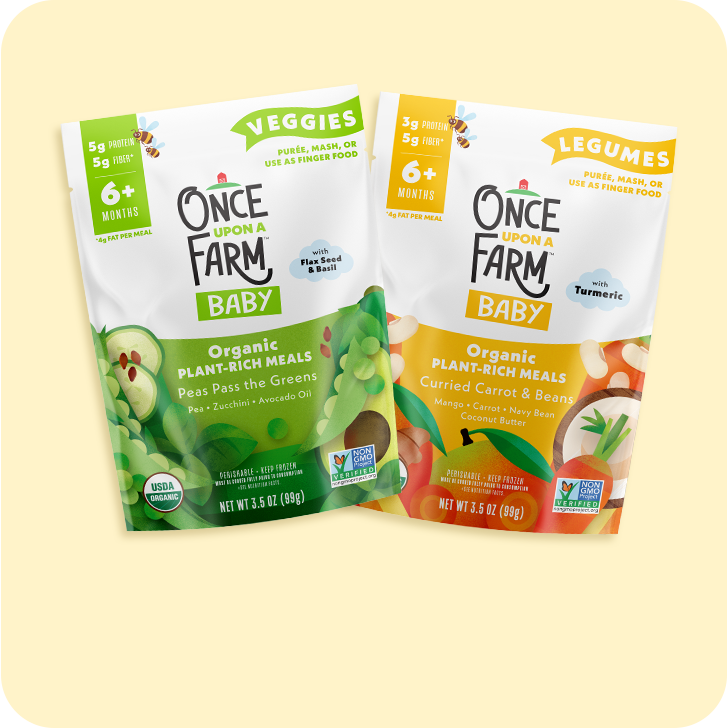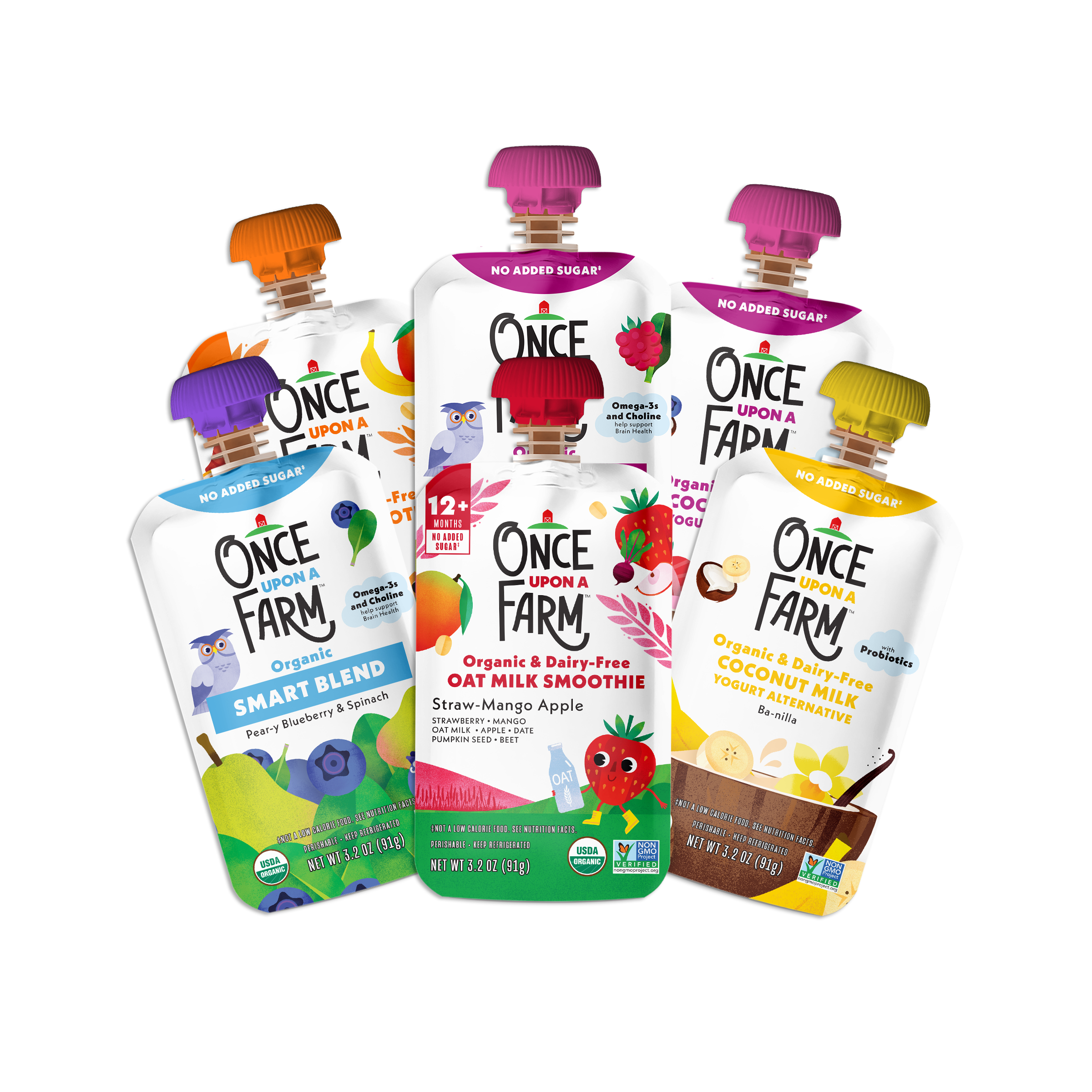Note: This blog is not medical advice and is for informational purposes only. For any specific recommendations or questions, please refer to your child’s pediatrician or healthcare provider.
Heavy metals are a hot topic these days, and for good reason. Recent reports have signaled that we need to be doing more to ensure foods are safe and nutritious—especially for our most vulnerable populations. It’s also raised a lot of questions among parents and caregivers: what are heavy metals, how do they get into our foods, and how can we avoid them?
Recently, we hosted a Q&A in our private Facebook group with Jackie Bowen, Executive Director of Clean Label Project—a national nonprofit with the mission to bring truth and transparency to food and consumer product labeling. We’re sharing those questions anonymously below, to help you make informed decisions about your family’s food, too.
As a mission-led brand, one of the ways we’re able to help parents and caregivers minimize exposure to heavy metals is through our conscious partnership with Clean Label Project. Alongside Clean Label Project, Once Upon a Farm has been a longtime advocate for clean, safe nutrition for all, and we’re proud to continue to be a leading voice for positive change in our industry and beyond. Learn more about our partnership with Clean Label Project here.
Psst: Don’t miss the chance to ask your questions during our next expert Q&A!
1. What are heavy metals?
Jackie Bowen: According to the FDA, Arsenic, Lead, Mercury, and Cadmium—sometimes referred to as heavy metals or toxic elements—may occur naturally in the environment and are often at higher levels from past industrial uses and pollution. These contaminants have been prioritized due to their potential to cause harm during times of active brain development—in the womb through early childhood.
2. What are the potential risks of heavy metals exposure?
JB: The food safety regulatory fabric in America is largely focused on pathogenic microbiological contaminants—things like e.coli, salmonella, and listeria, which can cause food poisoning within 24–72 hours. But consumers also have concerns about how the food they eat and products they use are linked to long-term chronic disease- things like cancer and infertility.
This is especially relevant when talking about infants and children. Because of the number of calories they ingest every day [is a larger fraction of their total weight than older children and adults, the amount of heavy metals to have an impact is far less]. The WHO, AAP, AMA, FDA, EPA, CDC, all say there is no safe level of lead. [Note: It is difficult to show the direct link of low level exposure to pesticides, heavy metals and plasticizers because it can take decades for a disease to manifest itself].
[Heavy metals accumulate in the body over time and] can disrupt function in vital organs and glands such as the heart, brain, kidneys, bone, liver, etc. Heavy metal exposure, especially lead, is associated with many cognitive and behavioral problems and is a significant risk factor for cardiovascular diseases, mental disorders, and kidney disease.
3. How do heavy metals get into baby food in the first place?
JB: The reality is that heavy metals are naturally occurring in the earth's crust. Back in grade school, when you saw the Periodic Table of Elements up on the wall, Arsenic, Cadmium, Lead, and Mercury, were right up there next to Oxygen and Hydrogen. However, because of human causes like mining, fracking, industrial agriculture, and the use of wastewater for irrigation, heavy metals can contaminate and become concentrated in certain soils and the water. Depending on a plant’s biochemistry, it can uptake these contaminants from the water and the soils. In the absence of federal regulations requiring brands to pay attention to heavy metal contamination, the onus is on brands to proactively and voluntarily think about [product] safety differently, for both my family and yours.
4. Are organic baby foods safer in terms of contamination?
JB: After testing thousands of certified organic and non-certified organic foods and consumer products, I can tell you with confidence that the organic promise of less exposure to pesticides absolutely holds true. However, organic has its limitations. The USDA National Organic Program (NOP) is silent when it comes to heavy metals. When it comes to heavy metals, it is a worldwide problem.
[Once Upon a Farm Note: This is why we conduct extensive vetting and testing of raw ingredients and final products. It’s also why we partner with Clean Label Project to ensure that we are going above and beyond by testing for 400+ contaminants, including heavy metals and pesticides.]
5. What can I do to help keep the levels down on food I grow in my own garden?
JB: When it comes to things like maintaining your own garden, here are a few things to keep in mind. Remember, heavy metals are naturally occurring in the earth’s crust so there is no way to 100% avoid them. I really like using the Organic Materials Review Institute (OMRI) when it comes to figuring out what kind of soil nutrients that I need that are also not going to be harmful to my family’s health or the environment. OMRI is a resource that is utilized traditionally by certified organic farmers.
6. How can parents be sure that the baby food they are buying is safe?
JB: Lots of ways. First, look for the Clean Label Project mark on hundreds of baby food options for your family. Second, embrace diversity when it comes to feeding. Provide your child with lots of options to make sure that they are getting all the nutrients they need to grow and thrive.
Third, if a brand isn’t Clean Label Project certified, ask over social media about what they are doing to minimize heavy metal contamination in their products. Finally, work with your pediatrician as another trusted ally with a vested interest in the unique health needs of your child.
7. Do you have any rules of thumb for when products aren't Clean Label Project certified? I want to protect my child from heavy metals, pesticides, endocrine disruptors, etc.!
JB: First, the unfortunate reality is that the issue of heavy metals is pervasive and in the absence of federal regulations REQUIRING companies to factor in heavy metal contamination when it comes to food safety, brands have to take it upon themselves to proactively and voluntarily think about food safety differently—for my family and yours. The same butternut squash and sweet potatoes in the produce department is the same butternut squash and sweet potatoes that are in baby foods. The difference with brands that are Clean Label Project certified is that they are voluntarily doing increased surveillance of their suppliers/farmers. So find comfort in knowing that there are brands out there doing that homework for you.
It sounds like you are already doing an amazing job of being your child’s advocate. Use social media to ask questions and demand answers from brands, especially your family’s favorite uncertified brands. Ask your family’s favorite brands and products about what they are doing to minimize the introduction of heavy metals into their products. Asking over social media helps inform other readers too.
8. If you could give someone advice on three things to focus on, what would those be?
JB: OK, if I was going to make a practical short priority list of what to focus on, here’s what I would do.
1. Have your water tested. While I spend 90% of my day talking about food safety, food safety originates with water safety. So many conversations in recent years on the impact of lead pipes on the safety of the drinking water supply. See if this is an issue for your community. This is so often overlooked. Even if you do find out that you have lead pipes in the area, there are amazing filters out there that can remove lead. (Just make sure you commit to actually changing out that filter when recommended)
2. Organic food is a great option because it will tick a bunch of boxes. Organic does not allow the use of [bio-engineered] organisms and organic also does not allow the use of harsh preservatives.
9. What actions are being taken by the FDA to address this issue of heavy metals in baby food?
JB: Following the Congressional investigation into the levels of heavy metals in top selling baby foods, the FDA launched its Closer to Zero program.
The FDA’s overall goal is to reduce dietary exposure to contaminants to as low as possible, while maintaining access to nutritious foods. The agency’s work to date has resulted in significant progress in reducing exposure to environmental contaminants from foods and Closer to Zero builds on this progress. This issue with Closer to Zero is that it is a several year process. Parents are trying to make the best and more informed choices for their family today. So while federal policy is on the right track, there is still work to do. You can read more about that progress here.
While the issue of heavy metals is across ALL foods, the FDA has prioritized foods commonly eaten by babies and young children because their smaller body sizes and metabolism make them more vulnerable to the harmful effects of these contaminants.





















